Importance of Demand Forecasting in Business | thouSense
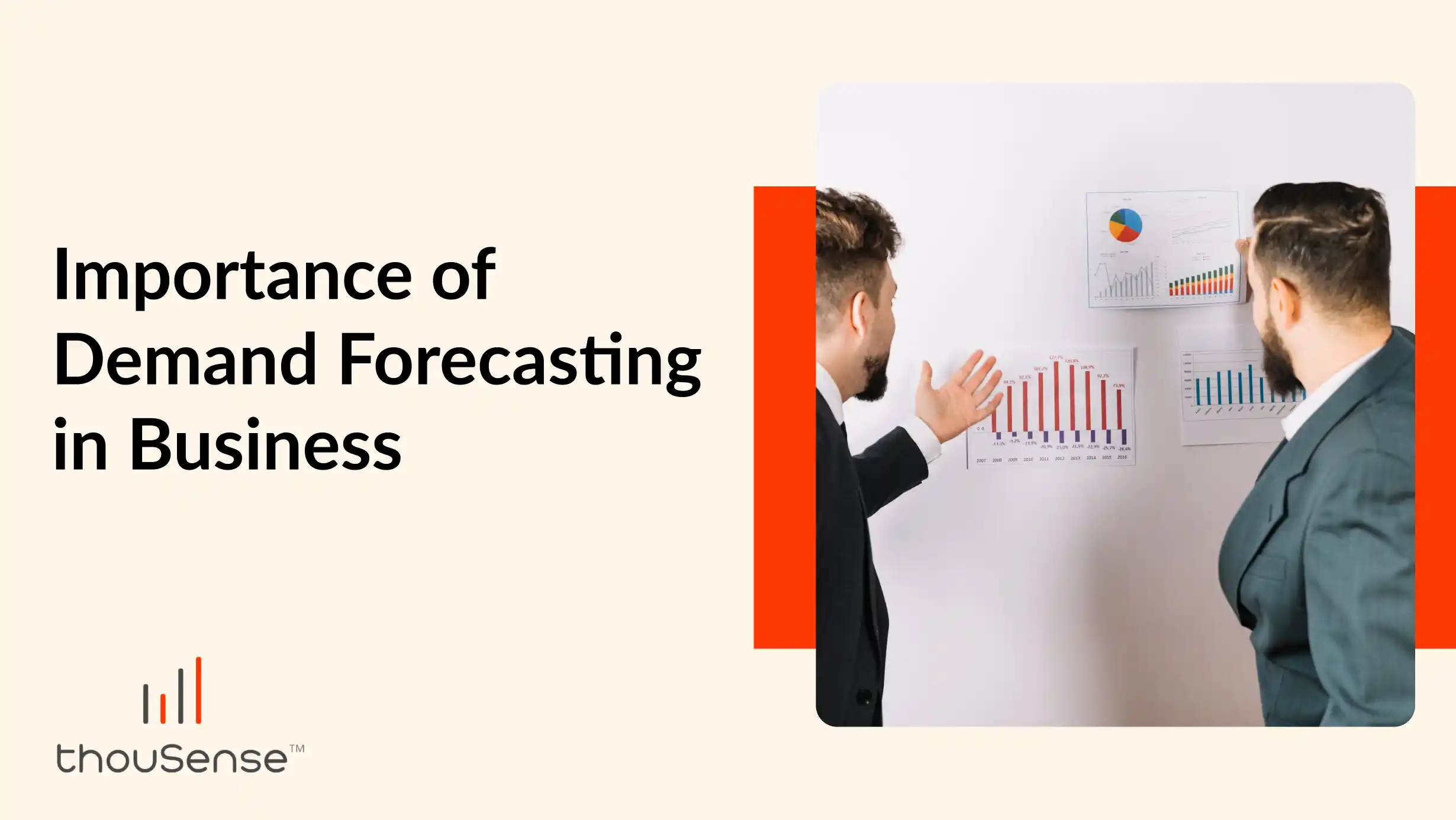
Demand forecasting involves anticipating future trends. For businesses, it means knowing how many products or services customers will want. It helps companies plan better and make smarter decisions. We believe that demand forecasting tools and solutions can make a big difference for any business.
What is Demand Forecasting?
One technique to estimate future consumer demand for a product is demand forecasting. Businesses use demand forecasting tools to collect and analyze data. This data helps them understand trends and patterns. With demand forecasting solutions, companies can prepare for the future in a better and systemic way.
Why is Demand Forecasting Important?
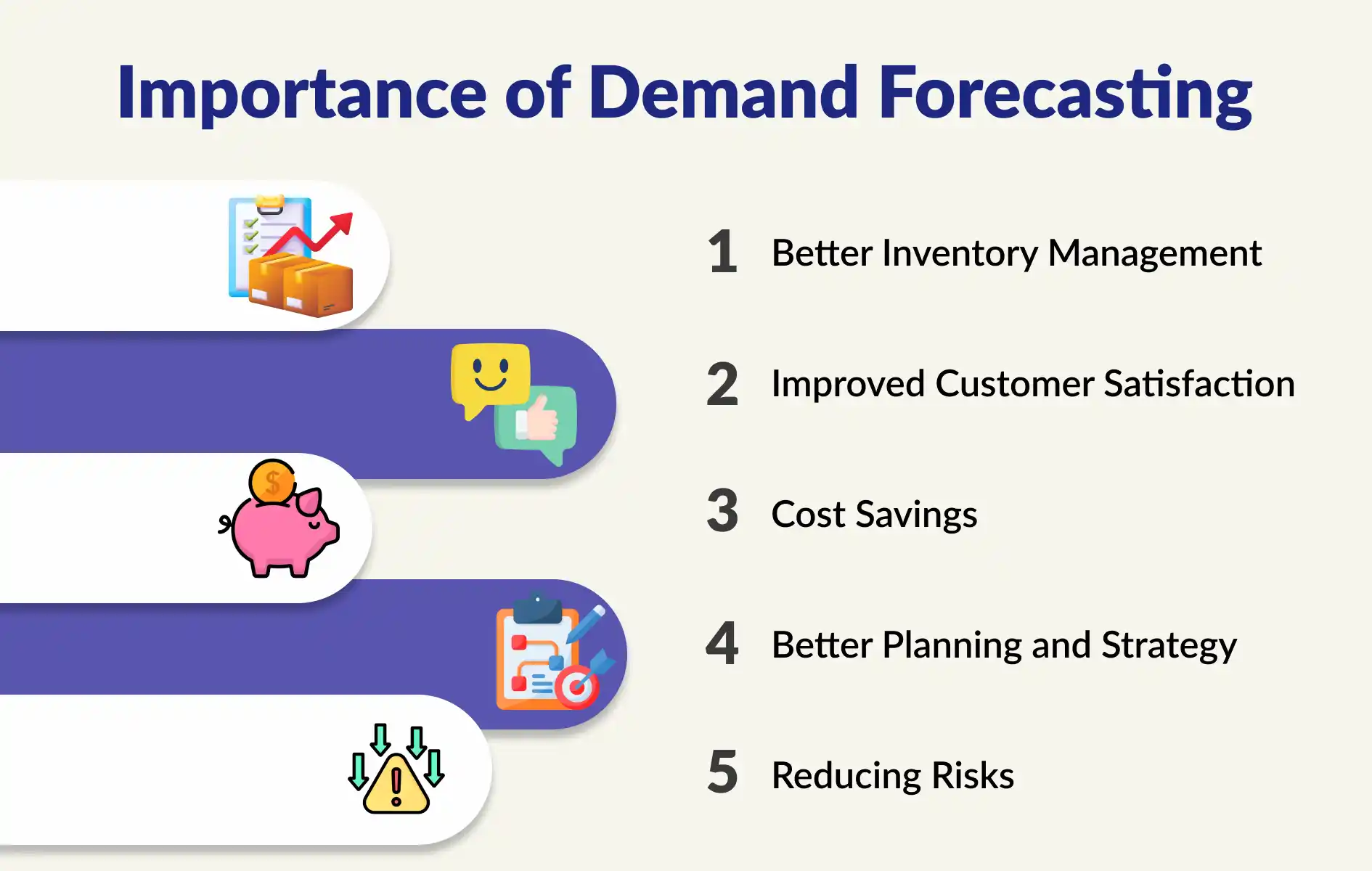
1. Better Inventory Management
Imagine a toy store before the holiday season. If the store doesn't have enough toys, kids might be disappointed. If they have too many toys, they might not sell them all and lose money eventually. Demand forecasting helps the store know how many toys to order. This way, they don't run out or have too many left over.
2. Improved Customer Satisfaction
Businesses may ensure they have the things in stock when they are aware of what their customers desire. This makes customers happy because they can always find what they need. Happy customers are more likely to come back and shop again which increases the business in the long run.
3. Cost Savings
Demand forecasting helps businesses avoid wasting money. If a company orders too much, they might have to throw things away. They risk missing out on sales if they place an inadequate order. Accurate demand forecasting helps businesses spend their money wisely.
4. Better Planning and Strategy
Businesses need to plan for the future. Demand forecasting helps them set goals and make plans. For example, if a company knows a product will be popular, they can invest in more marketing. If a product sells less, they can focus on other products.
5. Reducing Risks
There are many risks in business. For instance, a brand-new rival could join the market. Or, a popular product might become less popular. Demand forecasting helps businesses prepare for these risks. They can make plans to handle changes and stay successful.
Steps in Demand Forecasting
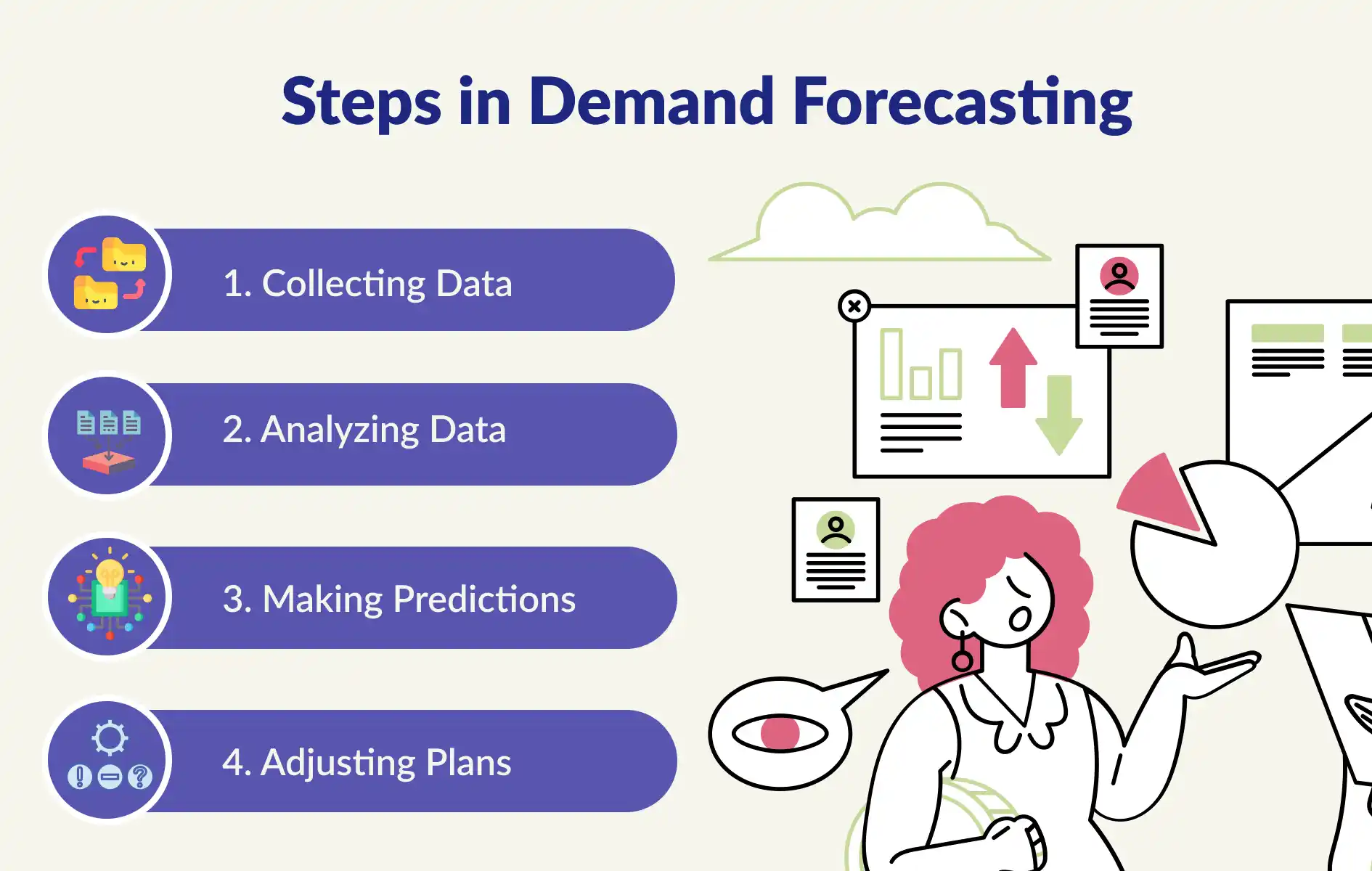
1. Collecting Data
The first step in demand forecasting is collecting data. This can include sales numbers, market trends, and customer feedback. Demand forecasting tools make it easy to gather and organize this data.
2. Analyzing Data
Next, businesses analyze the data. They look for patterns and trends. Demand forecasting solutions use advanced algorithms to find these patterns. This helps businesses make accurate predictions and helps them in the long run.
3. Making Predictions
After analyzing the data, businesses can make predictions. They use the information to forecast future demand. This helps them plan for inventory, marketing, and other business activities.
4. Adjusting Plans
Demand forecasting is not a one-time thing. Businesses need to keep updating their predictions. They collect new data and adjust their plans accordingly. This helps them stay on track and be successful.
Types of Demand Forecasting
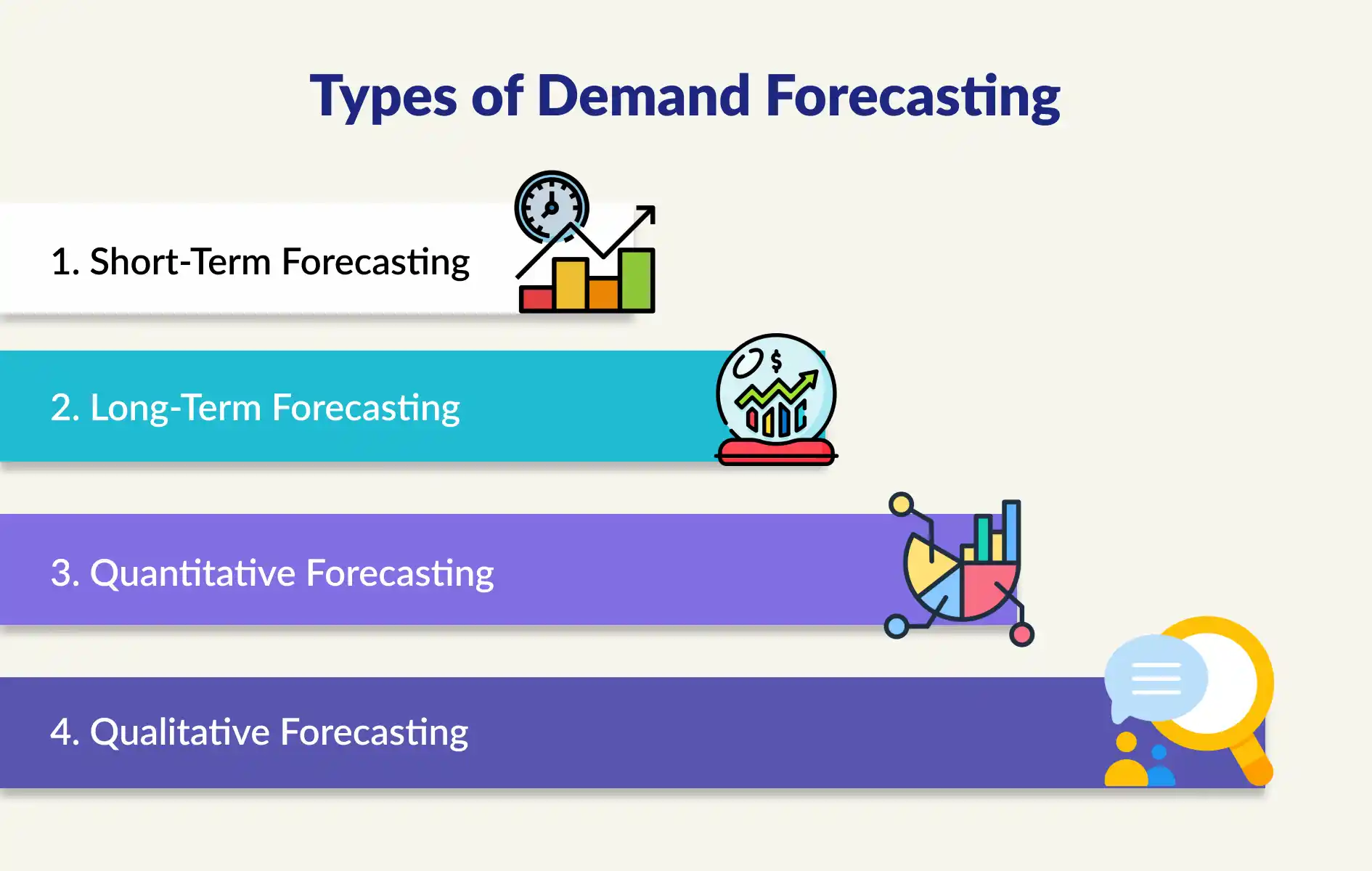
1. Short-Term Forecasting
Short-term forecasting looks at the near future. This can be days, weeks, or months. It facilitates prompt decision-making and everyday operations management for businesses. For example, a restaurant might use short-term forecasting to know how much food to buy each week to fulfill their weekly requirement.
2. Long-Term Forecasting
Long-term forecasting looks at the distant future. This can be months or years. It helps businesses make big plans and set long-term goals. For example, a car manufacturer might use long-term forecasting to plan new models and production for their brand.
3. Quantitative Forecasting
Quantitative forecasting uses numbers and data. It looks at past sales and market trends to find the appropriate data required for forecasting. Demand forecasting tools help businesses analyze this data and make accurate predictions.
4. Qualitative Forecasting
Qualitative forecasting uses opinions and insights. It includes feedback from customers, experts, and employees. This aids companies in comprehending consumer preferences and market trends.
Benefits of Using Demand Forecasting Tools
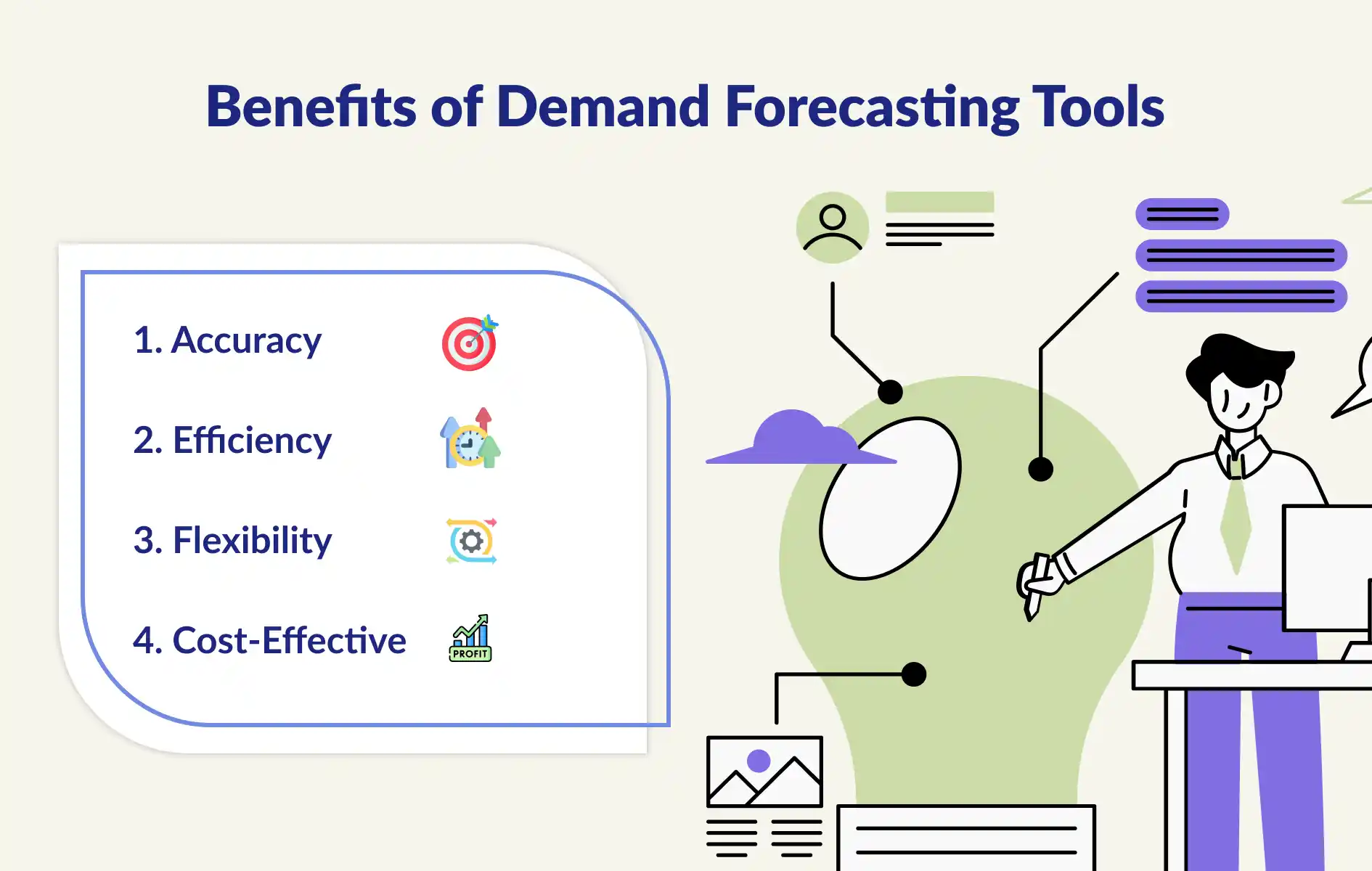
1. Accuracy
Demand forecasting tools use advanced algorithms to analyze data. This makes predictions more accurate. Accurate forecasts help businesses make better decisions and avoid mistakes.
2. Efficiency
Demand forecasting tools save time and effort. They automate data collection and analysis. This helps businesses focus on other important tasks.
3. Flexibility
Solutions for demand forecasting can be tailored to any type of business. They are able to forecast for various time periods and analyze various kinds of data. This makes them versatile and useful for any industry.
4. Cost-Effective
Long-term financial savings can result from investing in demand forecasting systems. Accurate forecasts help businesses avoid wasting money on excess inventory or missed sales opportunities.
Challenges of Demand Forecasting
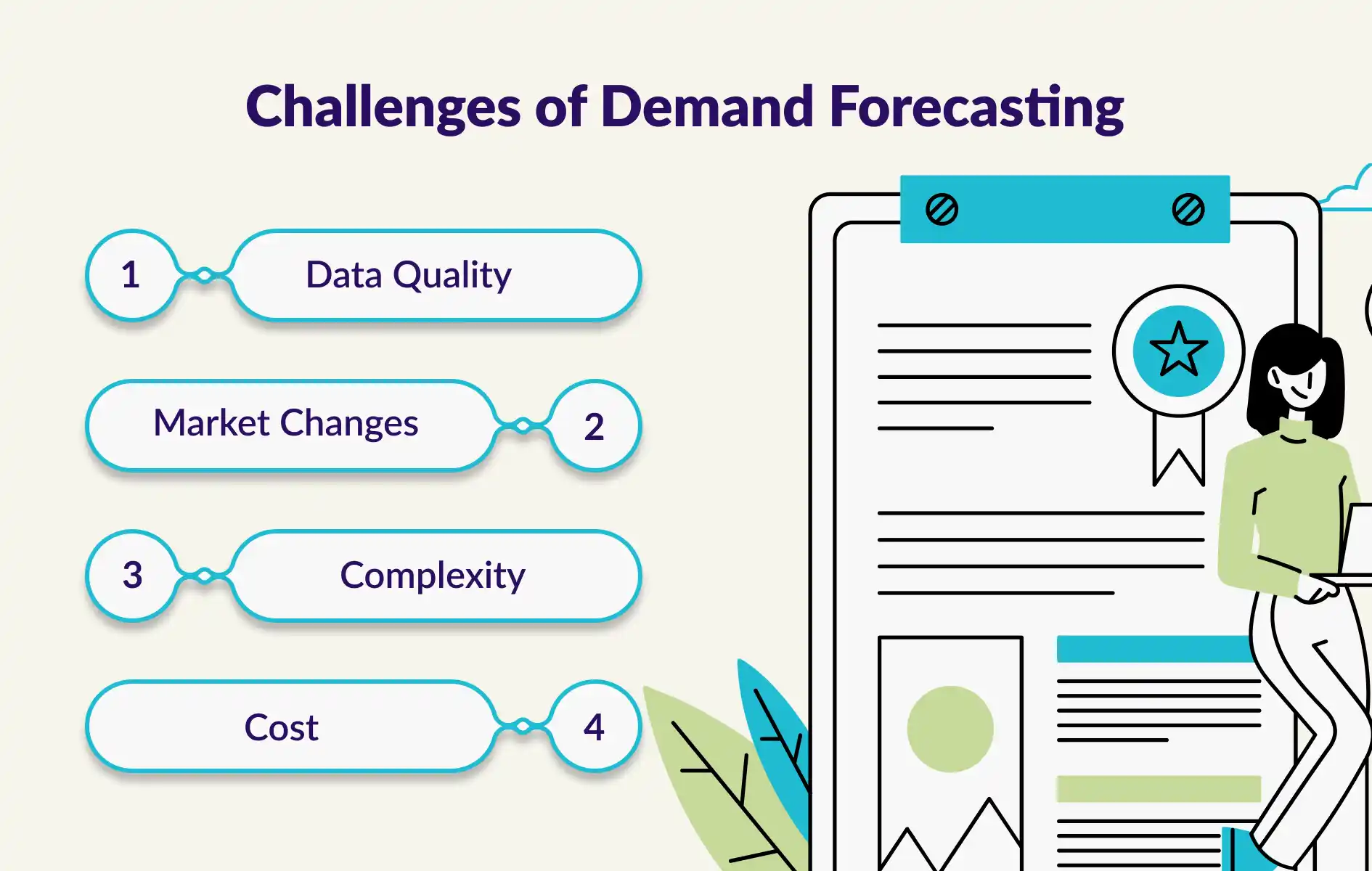
1. Data Quality
The quality of the data affects demand forecasting's accuracy. Poor data can lead to inaccurate predictions. Businesses need to collect reliable and up-to-date data for the best results.
2. Market Changes
The market can change quickly. Events, trends, or new rivals may have an impact on demand. Businesses need to keep updating their forecasts to stay accurate and relevant in the market and evolve as and when required.
3. Complexity
Demand forecasting can be complex. Analyzing large amounts of data and finding patterns can be challenging. Demand forecasting solutions can help simplify this process and help businesses grow.
4. Cost
Some demand forecasting tools can be expensive. Small businesses might find it hard to afford them. However, the benefits often outweigh the costs in the long run. Some tools like thouSense can prove to be quite beneficial for a small fee.
How thouSense Can Help
At thouCentric, we offer AI/ML based advanced demand forecasting tools and solutions named thouSense. Our tools are easy to use and provide accurate predictions. We help businesses collect and analyze data, make forecasts, and plan for the future. With thouSense, businesses can improve their operations, save money, and keep customers happy.
Conclusion
Demand forecasting is a powerful tool for businesses. It helps them plan for the future, reduce risks, and improve operations. thouSense is a top-notch demand forecasting tool that helps businesses make accurate predictions and achieve success. Whether you run a small shop or a large company, demand forecasting can make a big difference.
FAQs
1. What is demand forecasting?
Demand forecasting is the process of predicting future customer demand for products or services. It helps businesses plan inventory, marketing, and other activities.
2. What is the importance of demand forecasting?
Demand forecasting helps businesses avoid overstocking or understocking, improve customer satisfaction, save money, and make better plans for the future.
3. How do demand forecasting tools work?
Demand forecasting tools collect and analyze data to find patterns and trends. They use this information to make accurate predictions about future demand.
4. Can small businesses benefit from demand forecasting?
Yes, small businesses can benefit from demand forecasting. It helps them manage inventory, reduce costs, and improve customer satisfaction. Thousense offers affordable solutions for businesses of all sizes.